|
Integrating strategic action
plans with operational site management plans
A positional paper to prompt discussions about
the role of a conservation management system in local
authority biodiversity action planning
1 Data-structure and reporting
linkages
2 Example of a monitoring
project suitable for feedback to a strategic level
3 Biodiversity action
plan for the Barn Owl in Devon
4 Integrating strategy
with operations
1 Data-structure and reporting linkages
Fig 1 Data and reporting linkages for integra
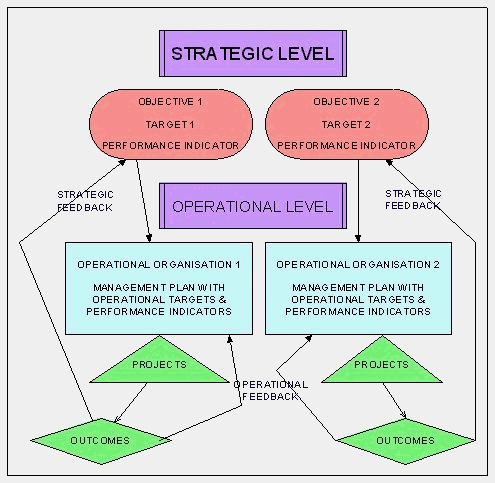
The conventional way to construct, record,
and report on, operational management plans is to use
a 'one to many' hierarchical relational database. The
same system may be used for coupling strategic plans
with operations on the ground. Coupling of operational
plans with strategic plans is essential for a strategy
group to evaluate compliance to its strategic objectives.
The essential elements of this integration are set out
in Fig 1.
The key connections between the central strategy
group and local site operations are made by a strategic
manager, who communicates objectives and targets to
individuals or agencies who are to undertake work to
meet the group's strategic objectives, and demands progress
reports for measuring compliance to its targets.
The overall plan, therefore, has to :-
- set out the strategy
group's objectives and its
targets (so- called 'smart objectives')
which are to be used by operational managers;
- provide summary instructions
for particular kinds of actions to be carried out
to meet these objectives (i.e. allocates strategic prescriptions);
- establishes data links with individuals and
organisations (perhaps through lead agencies) that
will produce one or more operational management
plans on the ground aimed at the objectives;
- defines an audit procedure for getting appropriate
reports from operational managers (perhaps through
a lead agency) which may be used to measure compliance
with the objectives.
The key to linking strategic planning with
operational planning is the gathering of feedback
from operational projects within each strategic prescription.
2 Example of a monitoring project suitable
for feedback to a strategic level
A management planning database is organised
as a dynamic system of information handling, which follows four
stages of devising and operating a management plan.
At an operational level
these stages are:-
- setting measurable objectives;
- defining factors that
will influence the efforts of management;
- defining management
tasks, (operational prescriptions ), which group projects
into sets according to the types of work needed
in relation to any practical constraints and modifiers;
- launching projects , which are the scheduled
work plans necessary to fulfil the objectives of
the plan;
- monitor progress of projects in relation
to targets.
Stage 1
What are the objectives
of management?
Planning involves setting
measurable objectives so that the work and
outcomes of management can be monitored. For example,
a management objective could appear in a management
plan entitled "Maintain the Marsh Fritillary
butterfly in a favourable condition". The favourable
condition is the population necessary to sustain
the species in the particular site. Management requires
that the favourable condition is defined by the
limits of change that are acceptable, on a year
to year basis. This range defines the performance
indicator against which the outcomes of management
will be measured
Stage 2
What are the management
tasks required to reach the objectives?
Objectives are reached
by defining practical routes to action termed prescriptions. An objective may have
several prescriptions assigned to it. For example,
two routes to action for fulfilling the above objective
would be two prescriptions entitled "Monitor
the Marsh Fritillary"; "Provide shelter
for egg- laying adults".
Stage 3
How are management strategies
turned into projects?
Prescriptions are general
routes in an action plan to sets of projects which
require scheduling work. A project is a description
of the necessary actions, their timing, the manpower
required, equipment needed, and the costs. For example,
a group of two projects to meet the first of the
above prescriptions would be entitled "Count
butterflies, using marked transects, on every day
favourable for flying", and "Count larval
webs".
Stage 4
How does a manager demonstrate
that management is effective?
Monioring reports are compiled from the
outcomes of monitoring projects to demonstrate that
management is effective and efficient, and to communicate
best practice between sites and organisations. For
example, feedback on monitoring could be reported
as "A plot of the last five years counts of
the Marsh Fritillary in relation to its acceptable
limits of change". If the acceptable limits
are not reached, restorative action is maintained.
It is this kind of feedback from a monitoring
project which should be made available to the strategic
manager of the organisation. Ideally, it should contain
a description of the project as well as a summary of
its compliance to objective.
3 Biodiversity action plan for the Barn
Owl in Devon
The above discussion illustrates the importance
of working from the 'ground' when designing an action
plan. However, the usual approach is top-down. The strategic
objectives are agreed by a strategy group consisting
of a wide range of agencies involved with local site
operations. This is illustrated by the county biodiversity
action plans being created as part of the UK Local Agenda
21 planning and consultation process. Usually, these
are aspirational and little attention is paid to the
mode of feedback from site managers who have to structure
and activate operations on the ground.
Fig 2 Part of the Devon biodiversity action
plan for the Barn Owl
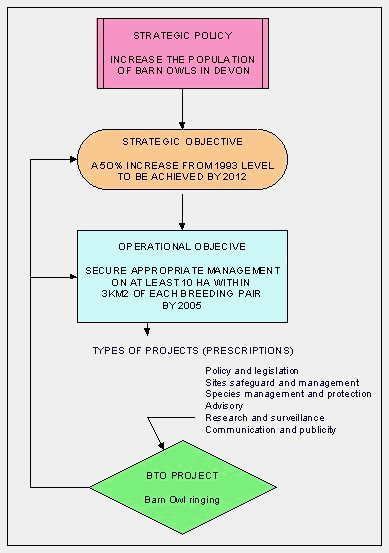
4 Integrating strategy with operations
Ideally, to make a biodiversity action plan,
a strategy group representing all bodies with an interest
in the area should avoid aspirational objectives and
sets measurable achievable objectives as targets of
the action plan. The objectives, and general instructions
(strategic prescriptions) for actions to meet them,
are allocated to organisations operating on the ground,
who are to produce action plans.
In the first draft of its Biodiversity Action
Plan, the UK county of Devon took this process to a
high degree of detail. For example, its action plan
for the Barn Owl involved 14 agencies meeting 4 objectives
through 29 actions. A summary of the data-structure
of the plan is illustrated in Fig 2.
Taking a bottom up approach, with the Devon
biodiversity action plan as a model, the key information
required by the strategic manager from the operational
managers would be contained in an annual report. This
may not be required at the level of detail required
at an operational leve. It summarises what has been
done, and indicates the target status of the project.
This information should be transmitted to the strategic
manager from all agencies responsible for meeting specific
objectives.
A strategic planning group is usually only
concerned with the monitoring of outcomes to meet its
conservation objectives in relation to the costs of
providing resources. The site managers are left to organise
the project work under each prescription head (Fig 3)
Fig 3 An integrated strategic/operational
planning system
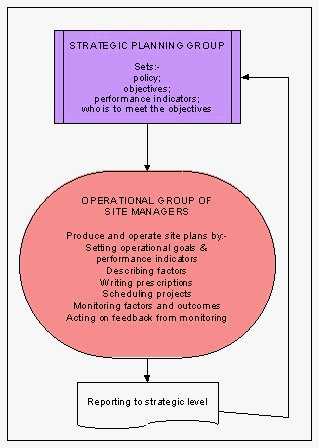
A site management plan is operated as an 'audit
cycle' in a closed loop system (Fig 4). This operational
CMS planning cycle is always linked with a corresponding
strategic cycle of the organisation which established
the overall visionary target and allocated resources
to meet appropriate management objectives (Fig 5). The
aim is to produce a seamless audit cycle from the strategic
level through on-site management plans.
Fig 4 The CMS as a management/monitoring/audit
cycle
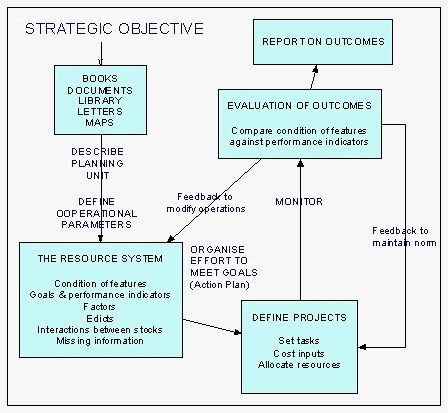
Fig 5 A conservation mangement system that
couples strategic planning with operational management.
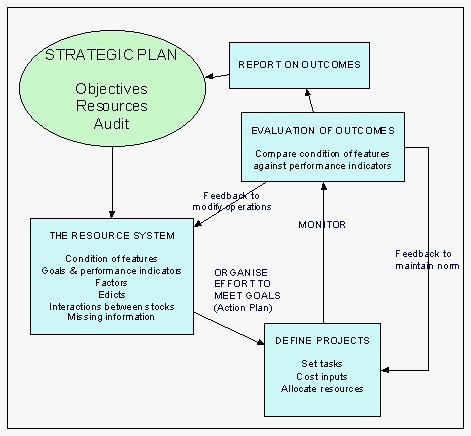
|